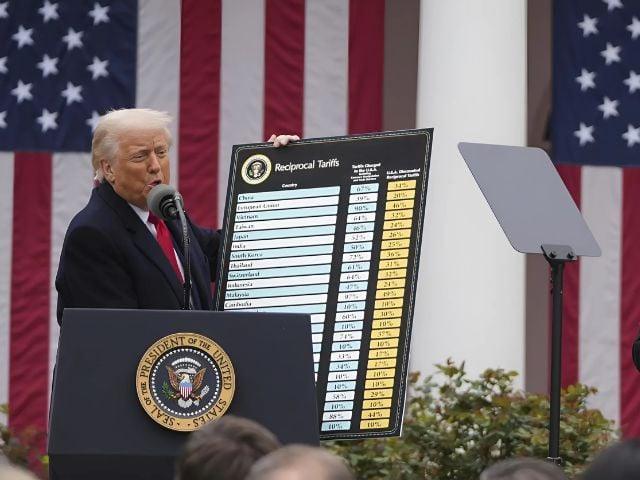US President Donald Trump announced on Wednesday the taxation of reciprocal prices in several countries, including a 29% tariff on Pakistani products.
Trump defended the decision, saying that it was necessary to correct longtime commercial imbalances and what he considered an unfair treatment of American products on foreign markets.
He has long pleaded for the reshaping of international trade agreements, saying that the high prices imposed by other countries have unjustly subsidized their economies to the detriment of the United States.
Trump explained that Pakistan invoiced in the United States a 58% rate on American products, which prompted the United States to impose a 29% tariff on Pakistani products.
The United States remains one of Pakistan’s largest trade partners, bilateral trade worth $ 7.3 billion in 2024. US exports to Pakistan increased by $ 2.1 billion, while Pakistan imports increased by 4.9%, totaling $ 5.1 billion.
Trump criticized the practice of subsidizing foreign economies, declaring that the United States has long helped other nations and urged countries to be more autonomous.
The United States has also imposed reciprocal prices on 40 other countries, with rates ranging from 10% to 50%, as part of a broader effort to combat world commercial imbalances.
The new prices, announced by President Donald Trump, are intended for countries that have received high prices on American products, in order to ensure more fair trade conditions for American industries.
The specific rate rates imposed are as follows:
China: 34%
European Union: 20%
Vietnam: 46%
Taiwan: 32%
Japan: 24%
India: 26%
South Korea: 25%
Thailand: 36%
Switzerland: 31%
Indonesia: 32%
Malaysia: 24%
Cambodia: 49%
United Kingdom: 10%
South Africa: 30%
Brazil: 10%
Bangladesh: 37%
Singapore: 10%
Israel: 17%
Philippines: 17%
Chile: 10%
Australia: 10%
Pakistan: 29%
Türkiye: 10%
Sri Lanka: 44%
Colombia: 10%
Peru: 10%
Nicaragua: 18%
Norway: 15%
Costa Rica: 10%
Jordan: 20%
Dominican Republic: 10%
United Arab Emirates: 10%
New Zealand: 10%
Argentina: 10%
Ecuador: 10%
Guatemala: 10%
Honduras: 10%
Madagascar: 47%
Myanmar (Burma): 44%
Tunisia: 28%
Kazakhstan: 27%
Serbia: 37%
Egypt: 10%
Saudi Arabia: 10%
El Salvador: 10%
Ivory Coast: 21%
Laos: 48%
Botswana: 37%
Trinidad and Tobago: 10%
Morocco: 10%
Algeria: 30%
Oman: 10%
Uruguay: 10%
Bahamas: 10%
Lesotho: 50%
Ukraine: 10%
Bahrain: 10%
Qatar: 10%
Mauritius: 40%
Fiji: 32%
Iceland: 10%
Kenya: 10%
Liechtenstein: 37%
Guyana: 38%
Haiti: 10%
Bosnia and Herzegovina: 35%
Nigeria: 14%
Namibia: 21%
Brunei: 24%
Bolivia: 10%
Panama: 10%
Venezuela: 15%
North Macedonia: 33%
Ethiopia: 10%
Ghana: 10%
He concluded his speech by reaffirming his “America First” position, describing trade deficits as a “national emergency”. The new rates of tariff vary from 10% to 49% for various countries, the United States imposing rates which generally represent approximately half of what other nations invoice, although in some cases the rates are identical.




